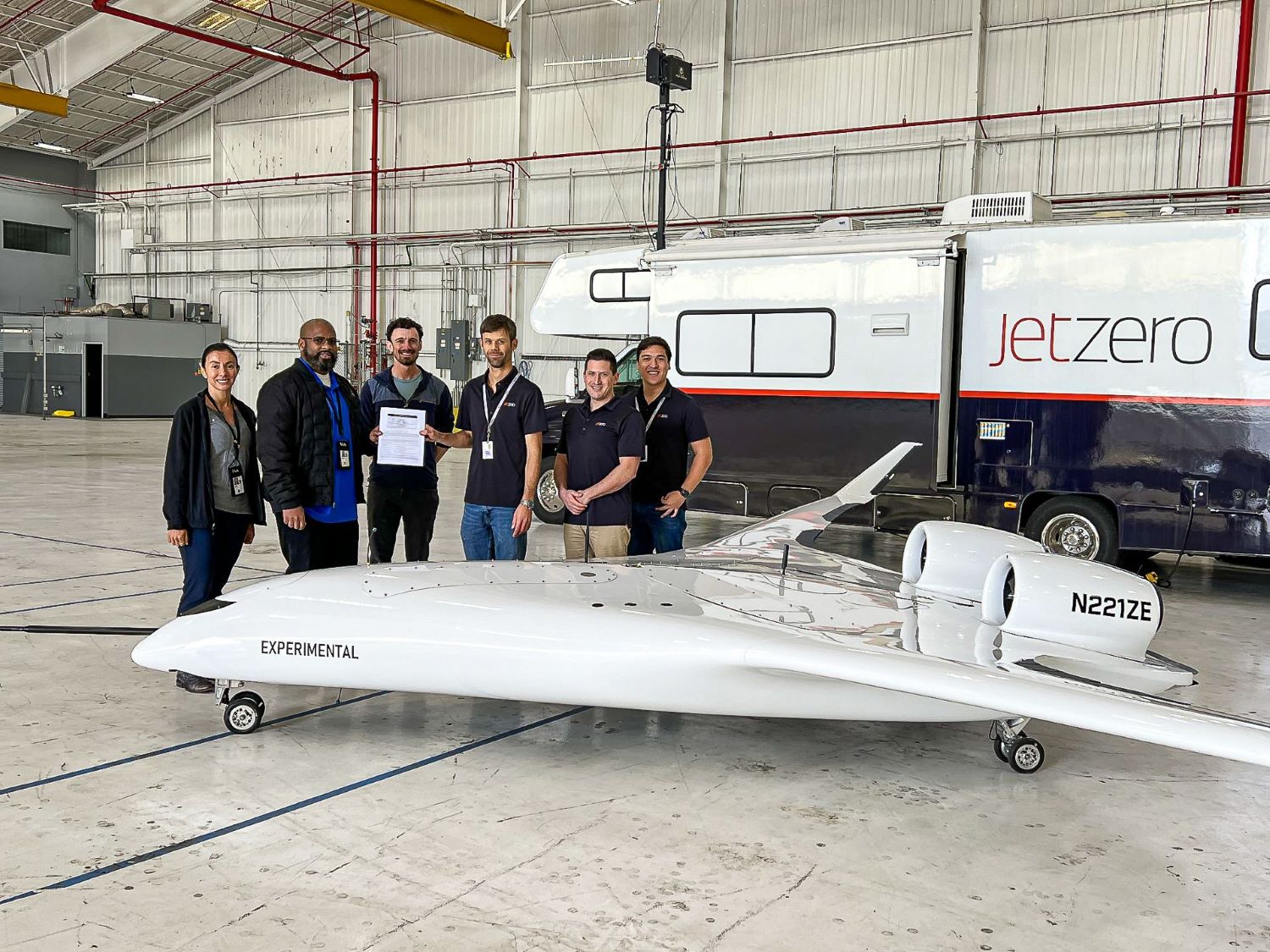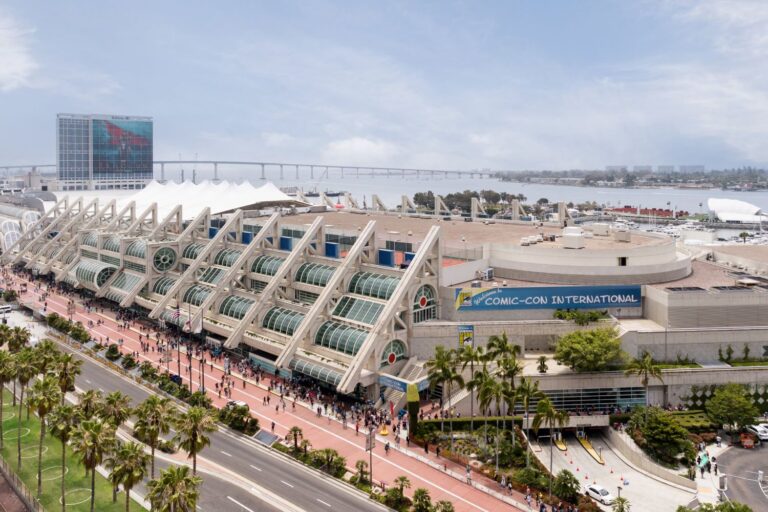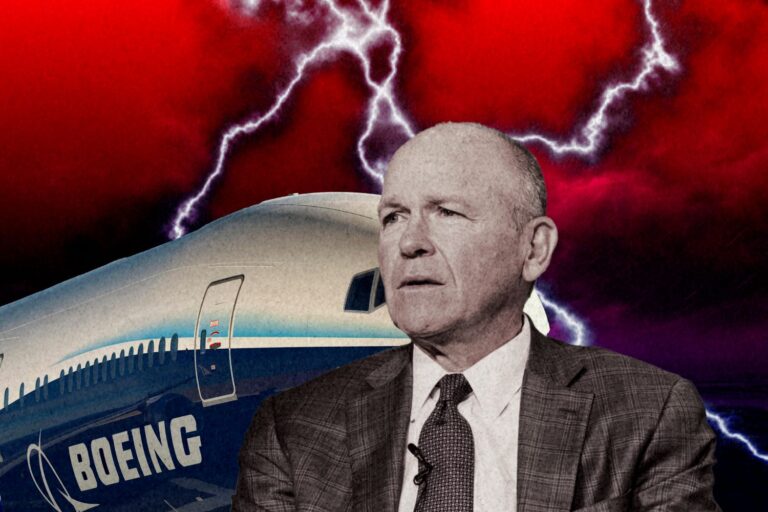One of the Pillars Corrupted – How is Boeing Messing up the Industry
William E. Boeing is still alive, we can easily guess his feeling to the free fall of the company that he founded – Boeing, depression. The pillar of the aviation industry—one the pride of America, with Boeing himself stated that he would rather close up shop than send out bad work. Now, the 737 Max series has proven that his legacy has been ruined.
Five years ago, two plane crashes happened in Indonesia and Ethiopia, just five months apart. They killed 346 people. Both crashes involved Boeing 737 Max planes. Then, this January, there was almost another disaster. A door plug blew off a plane from Alaska Airlines, a Boeing 737 Max nine, when it was flying at 16,000 feet after taking off from Portland, Oregon. It was very scary for the passengers, like a nightmare coming true.
After this incident, Boeing has making headlines on how bad their manufacturing has become, not to mention other scandals that brought the manufacturer in a thunderstorm. However, no matter how Boeing might present it, Its crucial role to the industry was irreplaceable.
That’s why when one of the pillars has been broken, the foundation of the aviation industry is fluctuating as well.
Shaking the Aviation Industry – What Does It Means to the Landscape
We have Boeing, Airbus as major aircraft manufacturers. Among these behemoths, Boeing’s line of products have been considered top of the list. In fact, there are over 10,000 Boeing commercial aircrafts currently in service. In America, almost all airlines fly Boeing, they are the first group that has taken the hit.
Stuck in a Mess – Airlines Crumbling
Airlines operating different models of the 737 Max are being forced to adjust their fleets, schedules, staff, and routes. Aviation analyst Richard Aboulafia suggests that these changes could potentially impact travelers.
Airlines like United, Southwest, Alaska, American, Icelandair, Copa, Aeromexico, Westjet, and Delta mostly use or plan to use a lot of Max planes. So, any new problems will mainly affect flights in the Americas.
United Airlines, led by CEO Scott Kirby, is one of the airlines most affected by these changes. Initially planning significant expansion, they anticipated receiving 127 new planes in 2023. However, due to recent developments, they now expect only 66. The company has abandoned immediate plans to acquire the plane and is instead arranging to lease Airbus aircraft starting in 2025.

Consequently, United is adjusting its flight schedules, reducing total passenger seat capacity for the summer quarter by 4.3% compared to its original published schedule. This information comes from analysts TD Cowen’s Becker and Tom Fitzgerald.
Southwest Airlines, which only flies Boeing planes, expects to get around 20 aircraft from Boeing this year, down from the 86 it planned for since the beginning of 2023. Among these, 45 were supposed to be the smallest version of the 737 Max plane.
Southwest Airlines has also reduced its summer capacity by 1.4% from its original schedule. Despite this cut, it still aims for a 4% increase compared to the previous summer. Southwest announced last month that it will slash pilot hiring by half and reduce flight attendant recruitment by 60% due to Boeing’s delivery delays.
However, getting them certified is taking longer due to extra tests required by Congress after the MAX crashes. Now, there are more delays because of an issue with the engine anti-icing system found after the Alaska incident.
Alaska Airlines, which operates an all-Boeing fleet, is also scaling back its plans. CFO Shane Tackett mentioned on the airline’s quarterly earnings call that they may receive “somewhere between 10 and 20” planes from Boeing this year, compared to the 26 they had anticipated as of January 2023.
Alaska has reduced its summer capacity by 6.7%. With uncertainty surrounding Boeing’s production stability and the certification of the 737 Max 10—of which Alaska has ordered 45—the airline might opt to take fewer planes than initially planned. According to Tackett, the final count will likely be lower than projections made a year ago.
Despite these challenges, an Alaska spokesperson assured Forbes via email that the airline remains confident in its ability to operate reliably and deliver passengers to their summer destinations.
Cirium, a data analysis company, noted that airlines’ August schedules have remained largely unchanged so far, indicating the possibility of further cuts in the future.
According to experts, reductions in flight capacity are expected to primarily occur in destinations with frequent daily flights, particularly in secondary cities rather than major hubs. For instance, in Orlando, Florida, a popular vacation destination, United Airlines has trimmed nearly a third of its scheduled flights from Reagan National Airport in Washington, D.C. for July. This leaves an average of nine flights per day, based on data from Cirium.
Plane delivery delays are causing airlines to keep older aircraft in service longer, especially for international flights. For example, United continues to use its aging 767-300s due to delays in 787 deliveries. Southwest is also extending the service life of some 737s.
Henry Harteveldt of Atmosphere Research noted that the combination of older planes breaking down more frequently and the reduced availability of new planes increases the likelihood of travel disruptions this summer. Additionally, airlines typically lack sufficient spare planes for emergencies.
Not a Good News for Airbus – Upsetting the Balance of the Industry
The airline industry relies on only two manufacturers for large wide-body jets: Boeing and Airbus. That explains the desire within the industry for Boeing to succeed. U.S. politicians, especially those representing regions with Boeing facilities, support the company to maintain jet production. While federal regulators prioritize aviation safety, they also likely aim to avoid being accountable for the downfall of one of the nation’s major corporations.
The airlines, on the other hand, prefer to have more than one jet manufacturer to choose from, as relying solely on Airbus could increase its pricing power. Airbus itself likely wishes for Boeing’s continued success, as safety issues are detrimental to the aviation industry overall, and Airbus already faces more demand than it can fulfill. Even Airbus is going to deliver 800 aircraft to customers this year, Boeing’s reduced production left a wide gap that no way Airbus can fill up.
Another factor supporting Boeing is the soaring demand for new jets, far surpassing the available supply. This is driven by both the increasing demand for air travel and the retirement of older aircraft from service.
As of the end of last year, Airbus had an order backlog exceeding 8,500 planes, while Boeing, despite its challenges, had a backlog of over 5,500 planes. Considering their delivery rates—Airbus delivered 735 aircraft last year, and Boeing 528—it would take approximately a decade to fulfill existing orders at the current pace.
Even switching to a different aircraft manufacturer could solve many problems for airlines, similar to how travelers hunt for the best fares. But buying a jetliner isn’t that simple. With only Boeing and Airbus as major options, airlines invest massive amounts of money and time when making a purchase decision.
New Entrants – But Things ain’t Simple
As per Avolon, a leasing firm, the aviation industry is currently facing a shortage of around 3,000 planes due to rising travel demand. Unfortunately, aside from Airbus and Boeing, there are few alternatives available to alleviate the capacity constraints faced by airlines.
Expanding into larger aircraft could be a potential option for Embraer, but it would represent a significant and risky leap for the Brazilian company. Bombardier’s attempt to enter the smaller end of the market dominated by Airbus and Boeing in the last decade resulted in disaster, ultimately leading to Bombardier largely withdrawing from mainstream commercial aviation markets.
China’s COMAC, with its C919 narrow-bodied jet entering commercial service for the first time last year, could emerge as a competitor to Airbus and Boeing, especially in its domestic market, over the long term.
However, despite its progress, COMAC still relies on US and European suppliers for crucial components like engines, avionics, control systems, and others. It lacks the extensive international network of parts and service centers that Airbus and Boeing have developed over many years, which would be challenging and expensive to replicate in the foreseeable future.
A new passenger aircraft, the JetZero Pathfinder, has recently been cleared for testing, sparking interest as a potential challenger to Boeing. Inspired by the design of the US Air Force’s B-2 Stealth Bomber, the Pathfinder features a unique “blended wing” design aimed at enhancing fuel efficiency by combining the wings and fuselage.

Established in 2021, JetZero aims to cut fuel consumption and emissions by 50% compared to traditional aircraft, with aspirations to begin service by 2030.
From National Pride to an Embarrassment – How Boeing Lost Its Way?
Decades of aerospace innovation had given Boeing a reputation as an irreplaceable manufacturer. But it just took the company a short period of time to really ruin the whole legacy. Many people are talking about all the flaws in their airplanes, but to understand the core of all these problems, we need to break down capitalism.
How Capitalism Ruined Boeing?
“We’ve been the technology leader in aviation in the world. Boeing was a magnificent company that made, in my opinion, the best airplanes in the world until some of these recent cultural changes, which all came from pressure to Wall Street and bad management,” said Congressman Peter DeFazio.
According to Julie Johnson, an aerospace reporter, Boeing has historically been an immensely significant and innovative company, but its performance as a stock hasn’t always reflected its importance. This might be the driving force behind its merger with McDonnell Douglas, an evil company that Boeing was not.
In 1997, Boeing merged with McDonnell Douglas, another aerospace and defense giant. “Boeing said ‘let’s do a merger, we’ll continue with the innovation, and maybe McDonnell Douglas will help us in terms of our structure and telling our story to Wall Street,’” said the reporter.
“Almost immediately, you began to hear kind of a bitter joke coming out of Seattle that McDonnell Douglas had used Boeing’s money to buy Boeing, and certainly, in terms of management structure, it began to look that way,” stated Richard Aboulafia, Vice President and Analysis at Teal Group.
Harry Stonecipher, a former GE executive and CEO of McDonnell Douglas, assumed the role of COO after the merger of the two companies. Under his leadership, the company’s style and culture began to resemble more of McDonnell Douglas’s approach, according to the Vice President.
Stonecipher wasted no time in signaling a shift in leadership and a commitment to implementing financial discipline at Boeing. Eventually, he rose to the position of CEO and continued to prioritize cost control within the company, a shift in culture that engineers at Boeing began to notice.
Stan Sorscher, a physicist at Boeing for over 20 years, felt these setbacks firsthand. He stated that Stonecipher said he was so proud of cutting his capital expenditure budgets by 60%. Capital expenditures, for them, were improvements in the factory, in their shop floor, in processes, materials, and things like that.

“By 2000, there was a great deal of dissatisfaction with the way our problem-solving culture was being displaced, and we thought it was just much more difficult for us to do our job,” said Stan Sorscher.
Brooke Sutherland, Bloomberg Opinion Columnist added to the point, “And that’s when a lot of people trace this sort of fundamental shift in thinking in terms of what you prioritize, whether that be profits or whether that be engineering.”
Further evidence of a move away from engineering prowess and innovation to profit was Boeing’s decision to move company headquarters to Chicago when Boeing’s jet manufacturing and airplane designers were in Seattle.
“Probably the biggest motivation was to send a message to the Street that this was a company that was not going to make investment decisions on the basis of legacy, heritage, or anything like that, but rather, purely make investment decisions on the basis of returns. By moving to a place where there were no legacy loyalties, no heritage production facilities, they were sending that message,” as shared by Richard Aboulafia.
Outsourcing Equals Broken Supply Chain
For the 787, Boeing attempted a new system for designing the aircraft. Instead of doing everything themselves, they outsourced much of the plane’s design and manufacturing to their main suppliers. This meant focusing on outsourcing to places where production could be cheaper, rather than continuing Boeing’s tradition of making the finest and safest airplanes.
Despite hopes, the project faced big delays, went way over budget, and had technical problems.
“We launched the 787, the worst I could think of was that we’d be three months late, which is a shooting offense at Boeing. It wasn’t three months late, it was three years late; it wasn’t 5 billion dollars over budget, it was 30 or 40 or 50 billion dollars over budget. Grounded the fleet for three months,” said Stan Sorscher.
“The suppliers were just in over their heads; most of them, we had years of issues. There was an engine explosion at one point; there was an electrical fire on flight test aircraft,” expressed Julie Johnson.
Stan Sorscher added, “And I thought ‘Okay, this experiment is done.’ This didn’t work. And the executives said ‘The business model is fine; we just didn’t execute it.’”
And it’s true that Boeing has been sticking with this outsourcing approach despite initial warnings. Boeing now outsources much of its production, leaving assembly as its main job, so those parts are made by at least 600 suppliers (many of which, in turn, rely on subcontractors).
Supervising all of those different suppliers is a complicate task, and it also requires a culture that employees feel safe when report on mistakes and the investment of serious resources in fixing them, which Boeing doesn’t have.
Airbus also depends on third-party suppliers, including Spirit Aerosystems, which was formerly part of Boeing and now produces fuselages for Boeing. However, Airbus relies on external suppliers to a lesser degree compared to Boeing.
During the pandemic, Airbus maintained control over most of its workforce, while Boeing significantly reduced its workforce. As demand for its planes has started to recover, Boeing has faced challenges in rehiring experienced workers.









